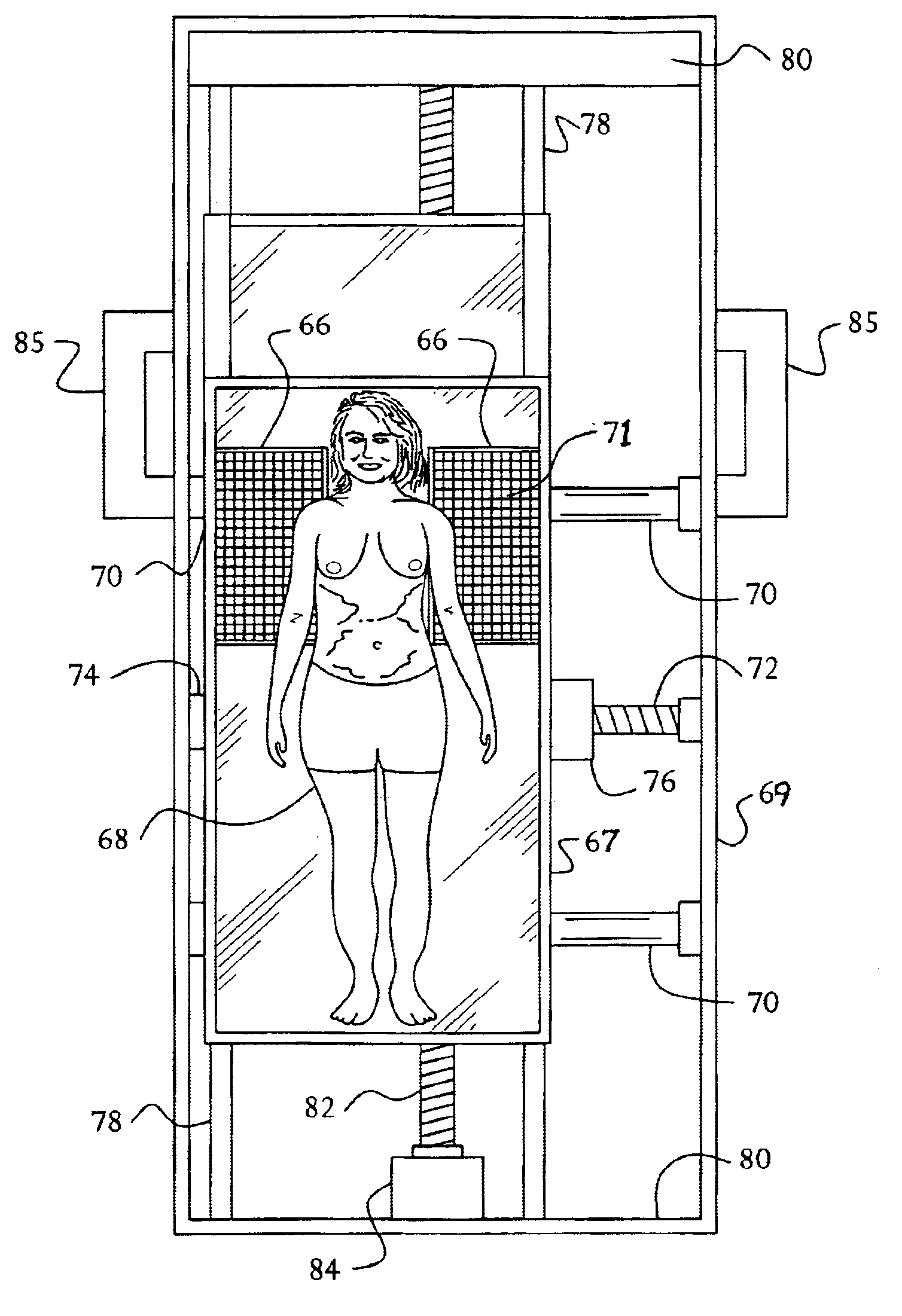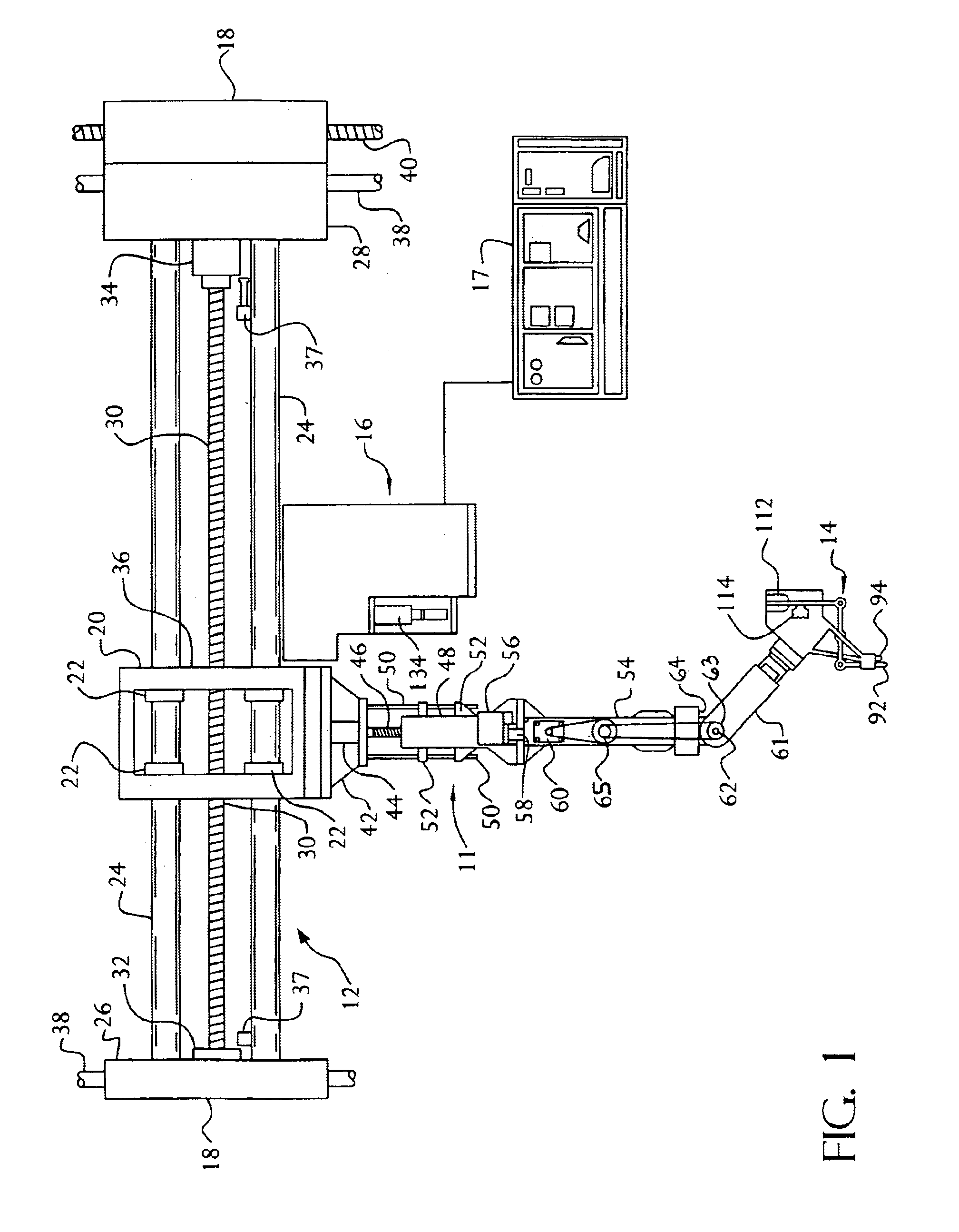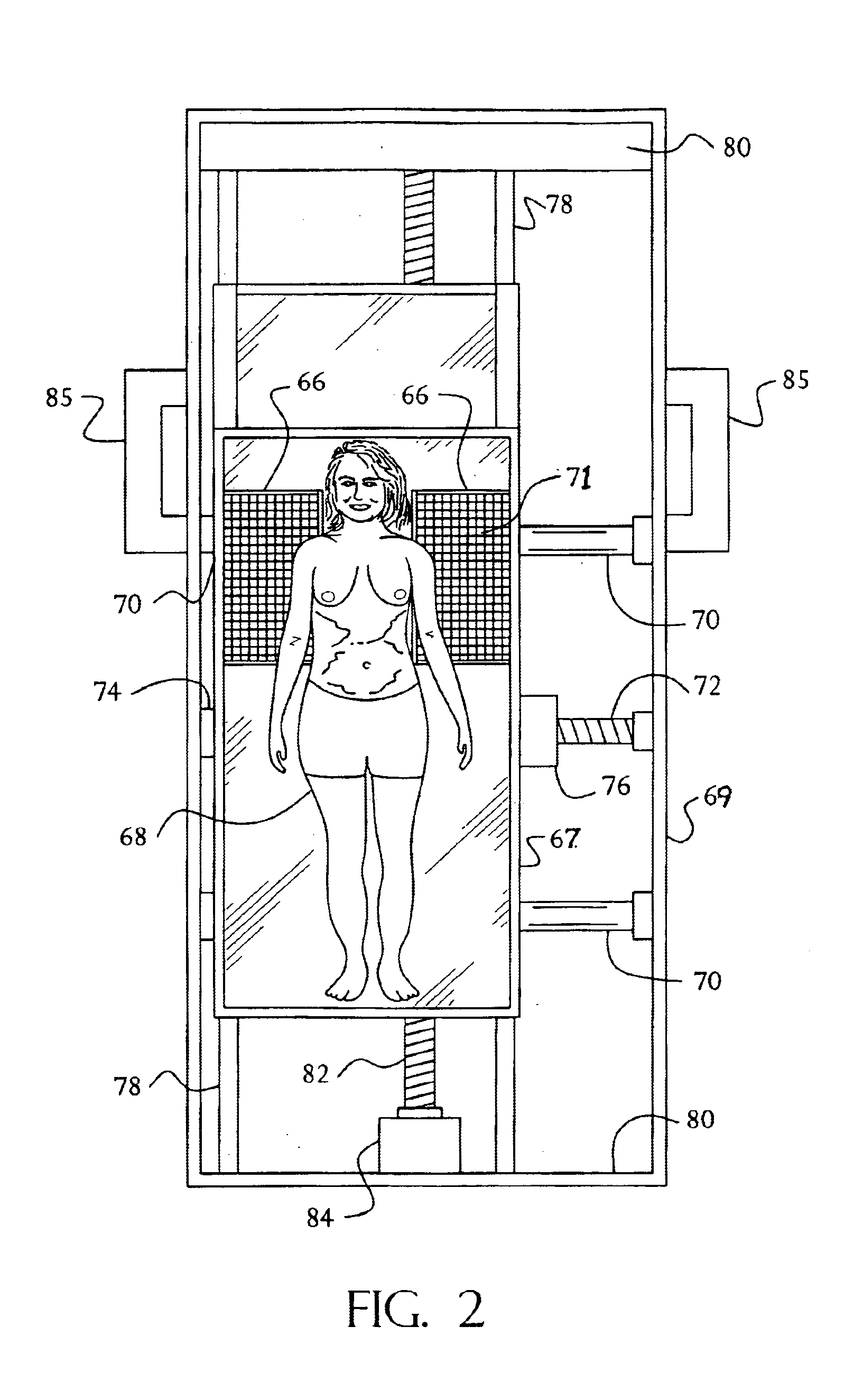Dynamic color imaging method and system
a color imaging and dynamic technology, applied in the field of dynamic color imaging methods and systems, can solve the problems of not meeting the need for more effective methods of early detection and corresponding treatment, reducing survival rates to 10 percent or less, and more obvious and less survivable indications of cancer, etc., to achieve the effect of facilitating accurate and early detection of tissue anomalies
- Summary
- Abstract
- Description
- Claims
- Application Information
AI Technical Summary
Benefits of technology
Problems solved by technology
Method used
Image
Examples
Embodiment Construction
Referring now to the drawings, wherein like numerals indicate like elements, there is shown in FIG. 1 an illustration of one embodiment of an apparatus 10 for detecting anomalies in human tissue. In one aspect of the invention, the apparatus 10 includes a carriage (also referred to as a robot arm) 11 that is mounted at a proximal end to a horizontal support 12 for movement therealong, and a detector 14 (also referred to as a detection head) that is mounted at the distal end of the carriage 11. The detector is shown in more detail in FIGS. 3 and 4 and is used to detect the characteristics of tissue by palpation. A locator 16, for locating the position of a patient relative to some reference, is mounted to the carriage 11 for movement therewith. Data is produced by the palpation device and collected, stored and displayed in a manner that will capture details of the detected anomalies for comparison with historical data The invention provides data about the tissue under investigation b...
PUM
 Login to View More
Login to View More Abstract
Description
Claims
Application Information
 Login to View More
Login to View More - R&D
- Intellectual Property
- Life Sciences
- Materials
- Tech Scout
- Unparalleled Data Quality
- Higher Quality Content
- 60% Fewer Hallucinations
Browse by: Latest US Patents, China's latest patents, Technical Efficacy Thesaurus, Application Domain, Technology Topic, Popular Technical Reports.
© 2025 PatSnap. All rights reserved.Legal|Privacy policy|Modern Slavery Act Transparency Statement|Sitemap|About US| Contact US: help@patsnap.com



